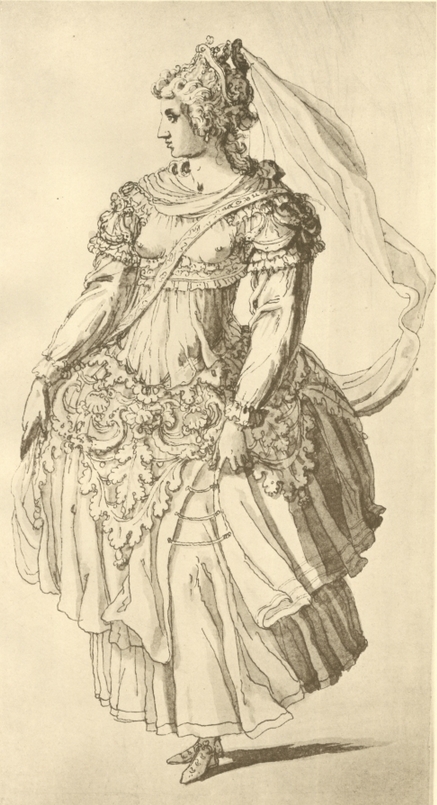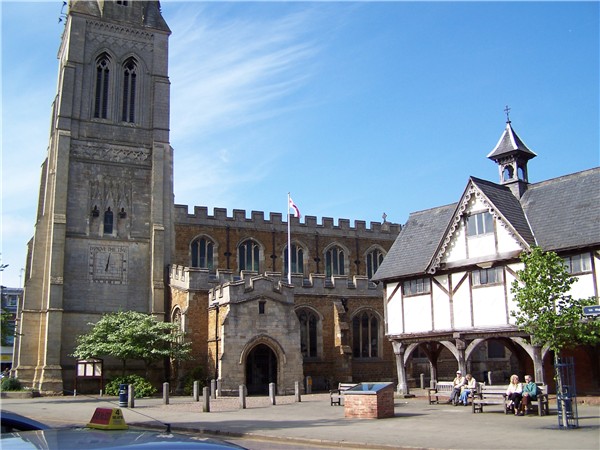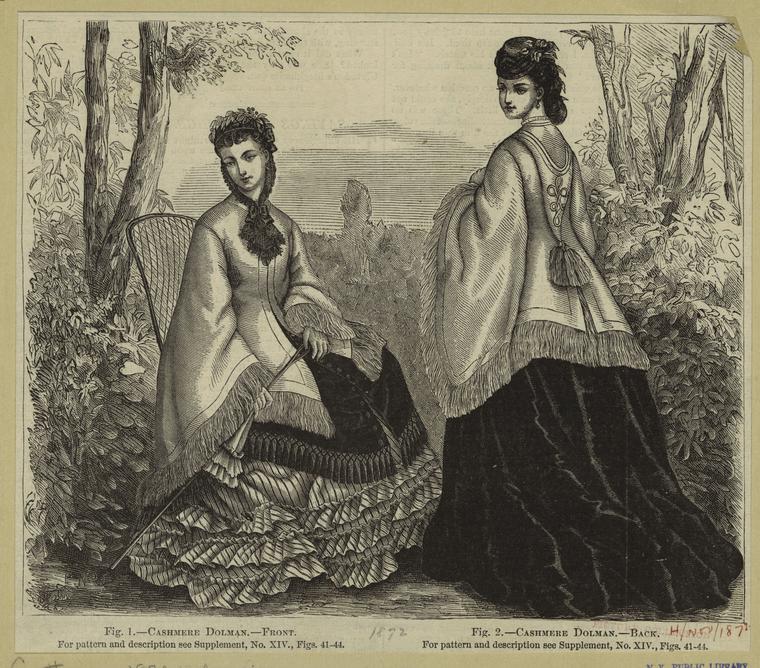|
Christopher Shawe
Christopher Shawe or Shaw (died 1618) was an English embroiderer and textile artist who worked on masque costume for Anne of Denmark. He was a member of the Worshipful Company of Broderers. Career In September 1589, Shawe married Isobel Buttes, originally from Streatham, at St Benet's, Paul's Wharf, the church used by the College of Arms. Shawe worked on masque costume in December 1603 for the female dancers in ''The Vision of the Twelve Goddesses'', and presumably other masques of the season. Some of the costume was recycled from the wardrobe of Elizabeth I. He also worked on other "parcels" (orders) of embroidery for Anne of Denmark supplied to Audrey Walsingham. "Master Shawe" was paid £106-7s for work on costumes for ''The Masque of Beauty'' in January 1608. He worked on costumes for the masque ''Tethys' Festival'' in 1610 and his bill detailing his work survives. He embroidered cobweb silver lawn with veins of silver and sea green silk, sewed motifs with silver and gold oes, ... [...More Info...] [...Related Items...] OR: [Wikipedia] [Google] [Baidu] |
Masque
The masque was a form of festive courtly entertainment that flourished in 16th- and early 17th-century Europe, though it was developed earlier in Italy, in forms including the intermedio (a public version of the masque was the pageant). A masque involved music, dancing, singing and acting, within an elaborate stage design, in which the architectural framing and costumes might be designed by a renowned architect, to present a deferential allegory flattering to the patron. Professional actors and musicians were hired for the speaking and singing parts. Masquers who did not speak or sing were often courtiers: the English queen Anne of Denmark frequently danced with her ladies in masques between 1603 and 1611, and Henry VIII and Charles I of England performed in the masques at their courts. In the tradition of masque, Louis XIV of France danced in ballets at Versailles with music by Jean-Baptiste Lully. Development The masque tradition developed from the elaborate pageants and cou ... [...More Info...] [...Related Items...] OR: [Wikipedia] [Google] [Baidu] |
Linen
Linen () is a textile made from the fibers of the flax plant. Linen is very strong, absorbent, and dries faster than cotton. Because of these properties, linen is comfortable to wear in hot weather and is valued for use in garments. It also has other distinctive characteristics, notably its tendency to wrinkle. Linen textiles appear to be some of the oldest in the world; their history goes back many thousands of years. Dyed flax fibers found in a cave in Southeastern Europe (present-day Georgia) suggest the use of woven linen fabrics from wild flax may date back over 30,000 years. Linen was used in ancient civilizations including Mesopotamia and ancient Egypt, and linen is mentioned in the Bible. In the 18th century and beyond, the linen industry was important in the economies of several countries in Europe as well as the American colonies. Textiles in a linen weave texture, even when made of cotton, hemp, or other non-flax fibers, are also loosely referred to as "linen". ... [...More Info...] [...Related Items...] OR: [Wikipedia] [Google] [Baidu] |
Gunpowder Plot
The Gunpowder Plot of 1605, in earlier centuries often called the Gunpowder Treason Plot or the Jesuit Treason, was a failed assassination attempt against King James I by a group of provincial English Catholics led by Robert Catesby who sought to restore the Catholic monarchy to England after decades of persecution against Catholics. The plan was to blow up the House of Lords during the State Opening of Parliament on 5 November 1605, as the prelude to a popular revolt in the Midlands during which King James's nine-year-old daughter, Elizabeth, was to be installed as the Catholic head of state. Catesby may have embarked on the scheme after hopes of securing greater religious tolerance under King James I had faded, leaving many English Catholics disappointed. His fellow contributors were John and Christopher Wright, Robert and Thomas Wintour, Thomas Percy, Guy Fawkes, Robert Keyes, Thomas Bates, John Grant, Ambrose Rookwood, Sir Everard Digby and Francis Tresham. Fawkes, ... [...More Info...] [...Related Items...] OR: [Wikipedia] [Google] [Baidu] |
Market Harborough
Market Harborough is a market town in the Harborough district of Leicestershire, England, in the far southeast of the county, forming part of the border with Northamptonshire. Market Harborough's population was 25,143 in 2020. It is the administrative headquarters of the larger Harborough District. The town was formerly at a crossroads for both road and rail; however, the A6 now bypasses the town to the east and the A14 which carries east-west traffic is to the south. Market Harborough railway station is served by East Midlands Railway services on the Midland Main Line with direct services north to Leicester, Nottingham, Derby and Sheffield and south to London St Pancras. Rail services to Rugby and Peterborough ended in 1966. Market Harborough was formerly part of Rockingham Forest, a royal hunting forest used by the medieval monarchs starting with William I, whose original boundaries stretched from Market Harborough through to Stamford and included Corby, Kettering, Desbo ... [...More Info...] [...Related Items...] OR: [Wikipedia] [Google] [Baidu] |
Chipstead, Surrey
Chipstead is a predominantly commuter village in north-east Surrey, England, that has been a small ecclesiastical parish since the Domesday Survey of 1086. Its rolling landscape meant that Chipstead's development was late and restricted compared to parishes of comparable distance from London. Formerly and formally including Hooley and Netherne-on-the-Hill, on census day, 1831 Chipstead had 66 homes. Today, excluding those two parts, the village has 1,212 homes spread across the slopes and crests of a northern section of the North Downs. Parts of the village are in or adjoin the Surrey Hills AONB. Geography The land within and to all sides forms curved valleys of downland. Beyond Chipstead's boundaries are the villages of Woodmansterne and slightly more distant Coulsdon, Banstead, Hooley and Kingswood. Woodmansterne is in two parts, one of which is in Greater London (as is Coulsdon) – the nearest, the Surrey part is the western follow-on to the built-up valley street of ... [...More Info...] [...Related Items...] OR: [Wikipedia] [Google] [Baidu] |
Mary Anne Everett Green
Mary Anne Everett Green ( Wood; 19 July 1818 – 1 November 1895) was an English historian. After establishing a reputation for scholarship with two multi-volume books on royal ladies and noblewomen, she was invited to assist in preparing calendars (abstracts) of hitherto disorganised historical state papers. In this role of "calendars editor", she participated in the mid-19th-century initiative to establish a centralised national archive. She was one of the most respected female historians in Victorian Britain. Family and early career Mary Anne Everett Wood was born in Sheffield to a Wesleyan Methodist minister, Robert Wood, and his wife Sarah ( Bateson; born Wortley, Leeds, youngest daughter of Matthew Bateson, clothier). Her father was responsible for her education, offering an extensive knowledge of history and languages, and she benefited from mixing with her parents' intellectual friends including James Everett, the minister and writer, for whom she was named. When th ... [...More Info...] [...Related Items...] OR: [Wikipedia] [Google] [Baidu] |
Iliad
The ''Iliad'' (; grc, Ἰλιάς, Iliás, ; "a poem about Ilium") is one of two major ancient Greek epic poems attributed to Homer. It is one of the oldest extant works of literature still widely read by modern audiences. As with the ''Odyssey'', the poem is divided into 24 books and contains 15,693 lines in its most widely accepted version, and was written in dactylic hexameter. Set towards the end of the Trojan War, a ten-year siege of the city of Troy by a coalition of Mycenaean Greek states, the poem depicts significant events in the siege's final weeks. In particular, it depicts a fierce quarrel between King Agamemnon and a celebrated warrior, Achilles. It is a central part of the Epic Cycle. The ''Iliad'' is often regarded as the first substantial piece of European literature. The ''Iliad'', and the ''Odyssey'', were likely written down in Homeric Greek, a literary amalgam of Ionic Greek and other dialects, probably around the late 8th or early 7th century BC. Homer's ... [...More Info...] [...Related Items...] OR: [Wikipedia] [Google] [Baidu] |
Charlotte Mary Yonge
Charlotte Mary Yonge (1823–1901) was an English novelist, who wrote in the service of the church. Her abundant books helped to spread the influence of the Oxford Movement and show her keen interest in matters of public health and sanitation. Life Charlotte Mary Yonge was born in Otterbourne, Hampshire, England, on 11 August 1823 to William Yonge and Fanny Yonge, ''née'' Bargus. She was educated at home by her father, studying Latin, Greek, French, Euclid, and algebra. Her father's lessons could be harsh: He required a diligence and accuracy that were utterly alien to me. He thundered at me so that nobody could bear to hear it, and often reduced me to tears, but his approbation was so delightful that it was a delicious stimulus.... I believe, in spite of all breezes over my innate slovenliness, it would have broken our hearts to leave off working together. And we went on till I was some years past twenty. Yonge's devotion to her father was lifelong and her relations with hi ... [...More Info...] [...Related Items...] OR: [Wikipedia] [Google] [Baidu] |
Agnes Strickland
Agnes Strickland (18 July 1796 – 8 July 1874) was an English historical writer and poet. She is particularly remembered for her ''Lives of the Queens of England'' (12 vols, 1840–1848). Biography The daughter of Thomas Strickland and his wife Elizabeth ( Homer), Agnes was born in Rotherhithe, at that time in Surrey, where her father was employed as a manager of the Greenland Dock. She was christened at St Mary's Church, Rotherhithe on 18 August 1796. The family subsequently moved to Thorpe Hamlet, Norwich, and then Stowe House, near Bungay, Suffolk, before settling in 1808 at Reydon Hall, Reydon, near Southwold, also in Suffolk. Agnes' siblings were Elizabeth, Sarah, Jane Margaret Strickland, Jane Margaret, Catharine Parr Traill, Susanna Moodie (1803–1885) Tom and Samuel Strickland. Agnes and her elder sister Elizabeth were educated by their father to a standard more usual for boys at that time. All of the children except Sarah and Tom eventually became writers. Agnes bega ... [...More Info...] [...Related Items...] OR: [Wikipedia] [Google] [Baidu] |
Henry Frederick, Prince Of Wales
Henry Frederick, Prince of Wales (19 February 1594 – 6 November 1612), was the eldest son and heir apparent of James VI and I, King of England and Scotland; and his wife Anne of Denmark. His name derives from his grandfathers: Henry Stuart, Lord Darnley; and Frederick II of Denmark. Prince Henry was widely seen as a bright and promising heir to his father's thrones. However, at the age of 18, he predeceased his father when he died of typhoid fever. His younger brother Charles succeeded him as heir apparent to the English, Irish, and Scottish thrones. Early life Henry was born at Stirling Castle, Scotland, and became Duke of Rothesay, Earl of Carrick, Baron of Renfrew, Lord of the Isles, and Prince and Great Steward of Scotland automatically on his birth. His nurses included Mistress Primrose and Mistress Bruce. Henry's baptism on 30 August 1594 was celebrated with complex theatrical entertainments written by poet William Fowler and a ceremony in a new Chapel Royal ... [...More Info...] [...Related Items...] OR: [Wikipedia] [Google] [Baidu] |
Tinsel
Tinsel is a type of decorative material that mimics the effect of ice, consisting of thin strips of sparkling material attached to a thread. When in long narrow strips not attached to thread, it is called "lametta", and emulates icicles. It was originally a metallic garland for Christmas decoration. The modern production of tinsel typically involves plastic, and is used particularly to decorate Christmas trees. It may be hung from ceilings or wrapped around statues, lampposts, and so on. Modern tinsel was invented in Nuremberg, Germany, in 1610, and was originally made of shredded silver. According to the ''Concise Oxford Dictionary'', the word is from the Old French word ''estincele'', meaning "sparkle". History In the 16th-century the word "tinsel" was used for a variety of lightweight fabrics with a metallic effect made with silk and gold and silver thread. These tinsel fabrics were used in elite cothes, masque costume, and for heraldric banners and flags. Elizabeth of York b ... [...More Info...] [...Related Items...] OR: [Wikipedia] [Google] [Baidu] |
Mantle (clothing)
__NOTOC__ A mantle (from old French ''mantel'', from ''mantellum'', the Latin term for a cloak) is a type of loose garment usually worn over indoor clothing to serve the same purpose as an overcoat. Technically, the term describes a long, loose cape-like cloak worn from the 12th to the 16th century by both sexes, although by the 19th century, it was used to describe any loose-fitting, shaped outer garment similar to a cape. For example, the dolman, a 19th-century cape-like woman's garment with partial sleeves is often described as a mantle. In English, the idiom "to take up/pick up/assume the mantle" is from the Bible, and means to take a position of authority, leadership or responsibility in a particular area, especially in the sense of carrying on for a previous figure. The most notable appearance in the Bible is in 2 Kings 2:13, where Elisha takes up Elijah's mantle ( ''’addereṯ''). Mantelets A variation on the mantle is the mantelet (also spelled mantelot and mantlet ... [...More Info...] [...Related Items...] OR: [Wikipedia] [Google] [Baidu] |








